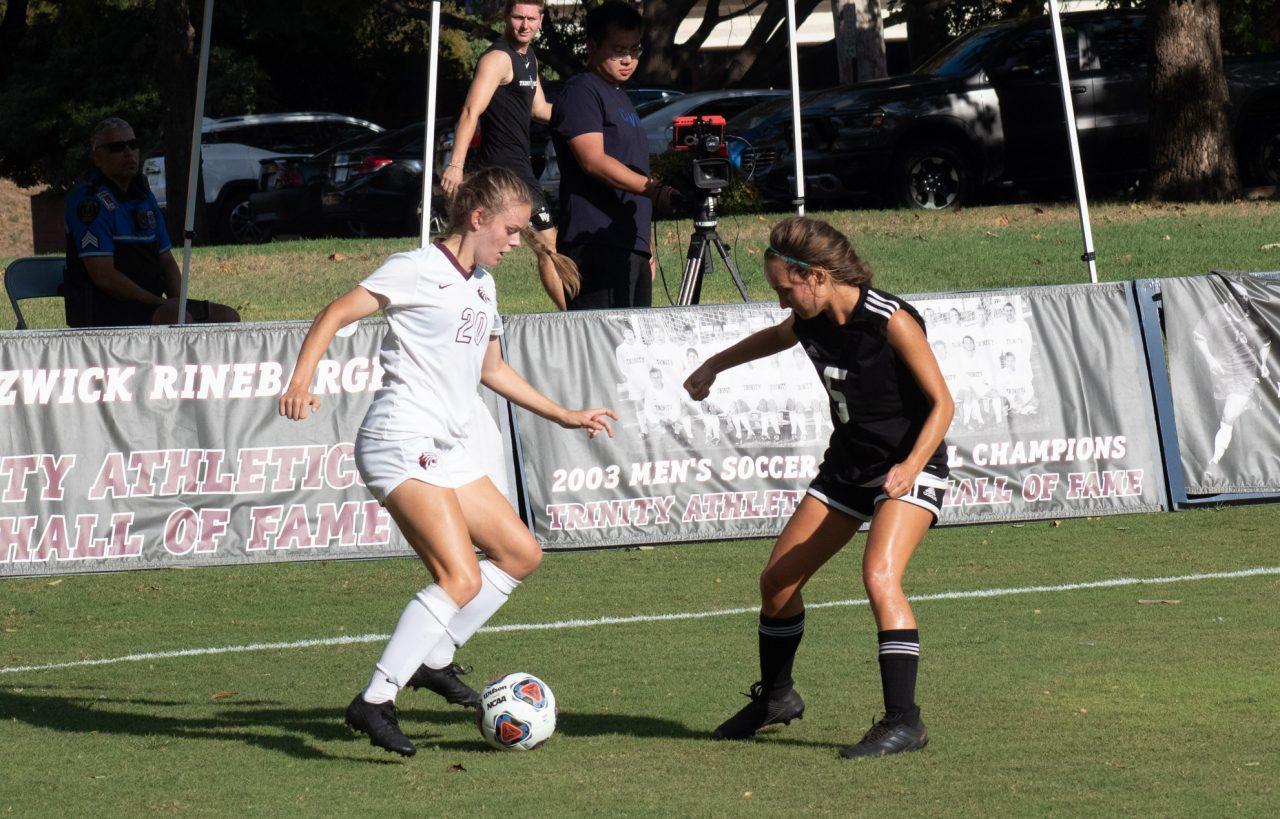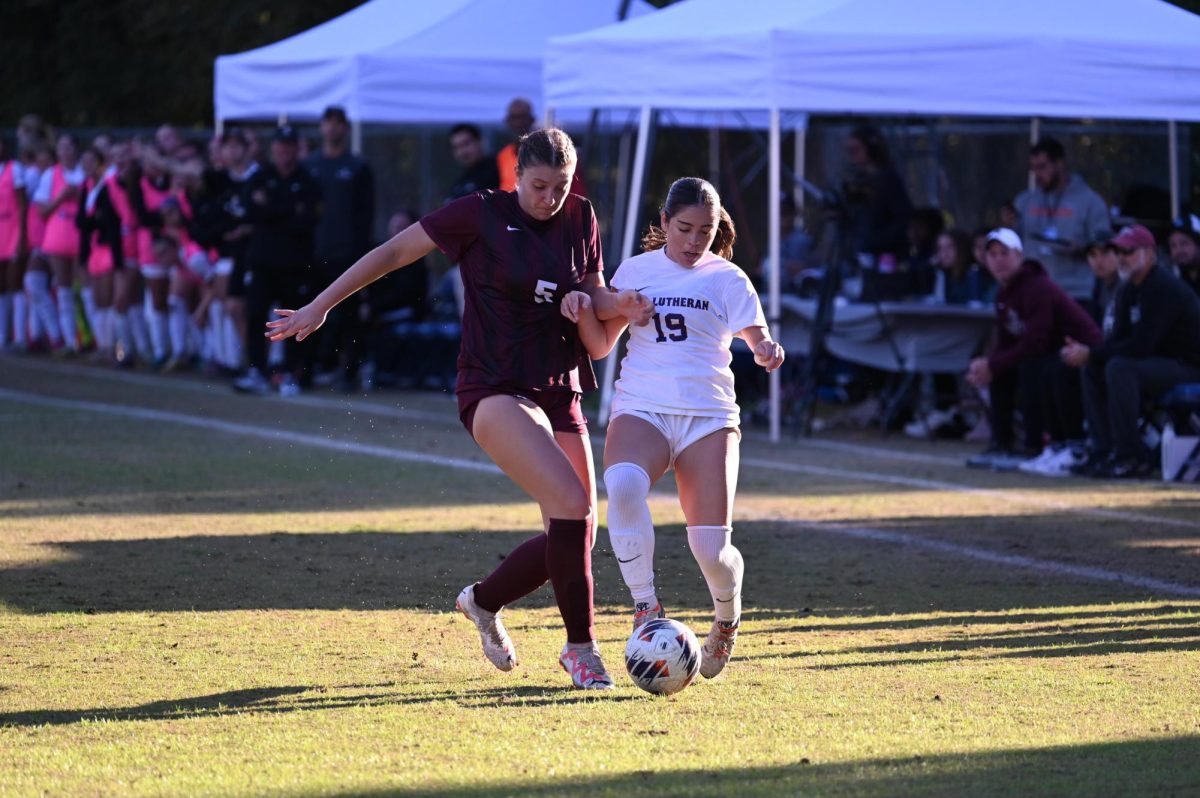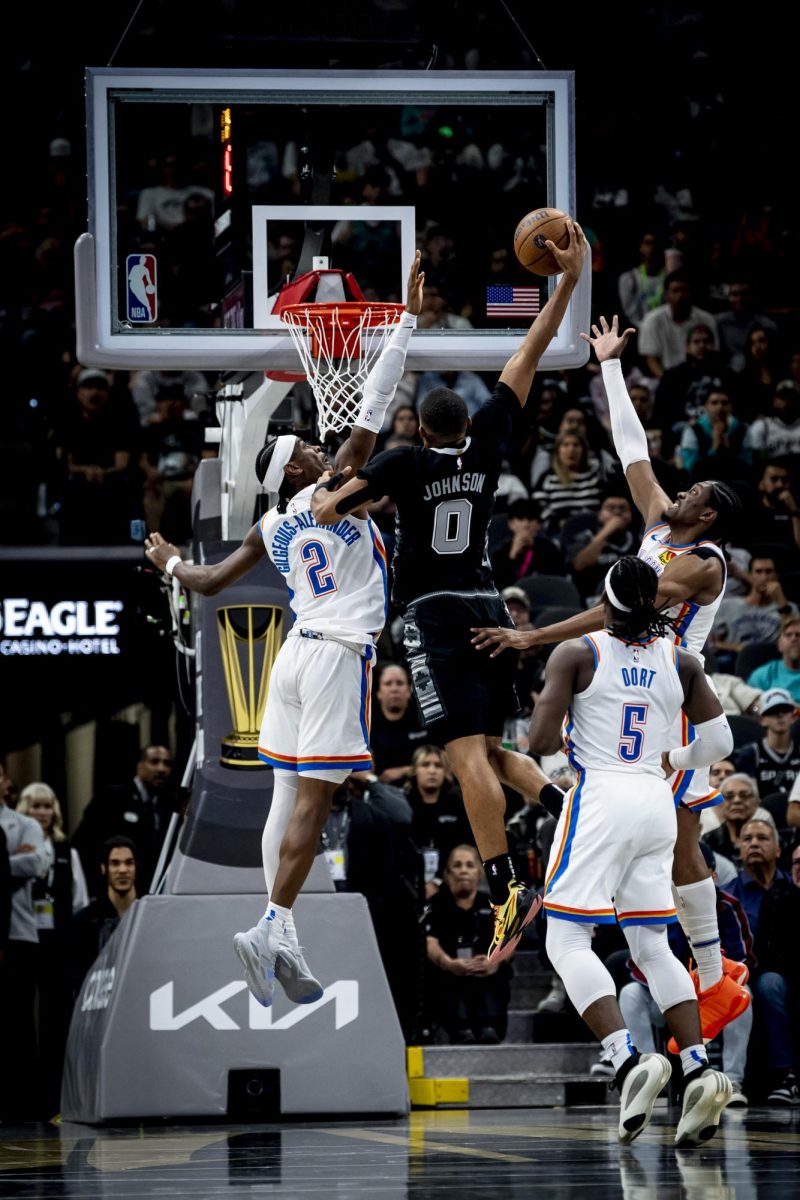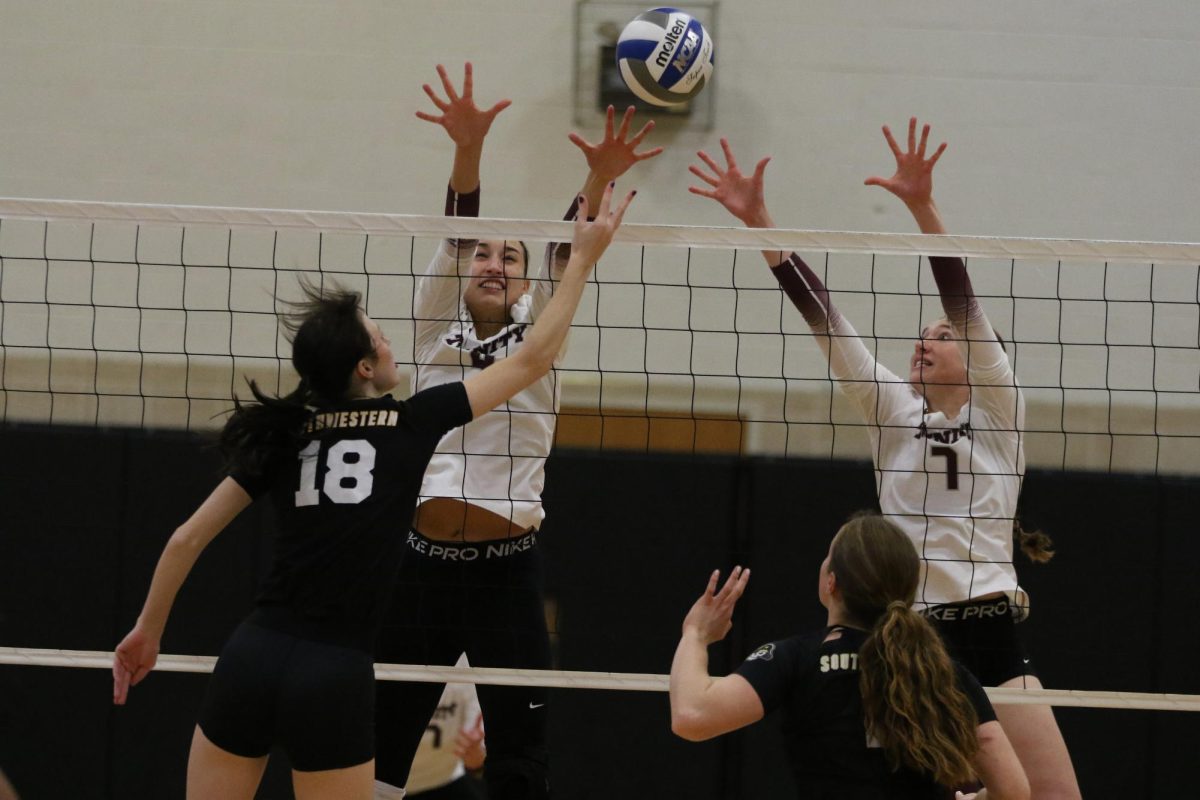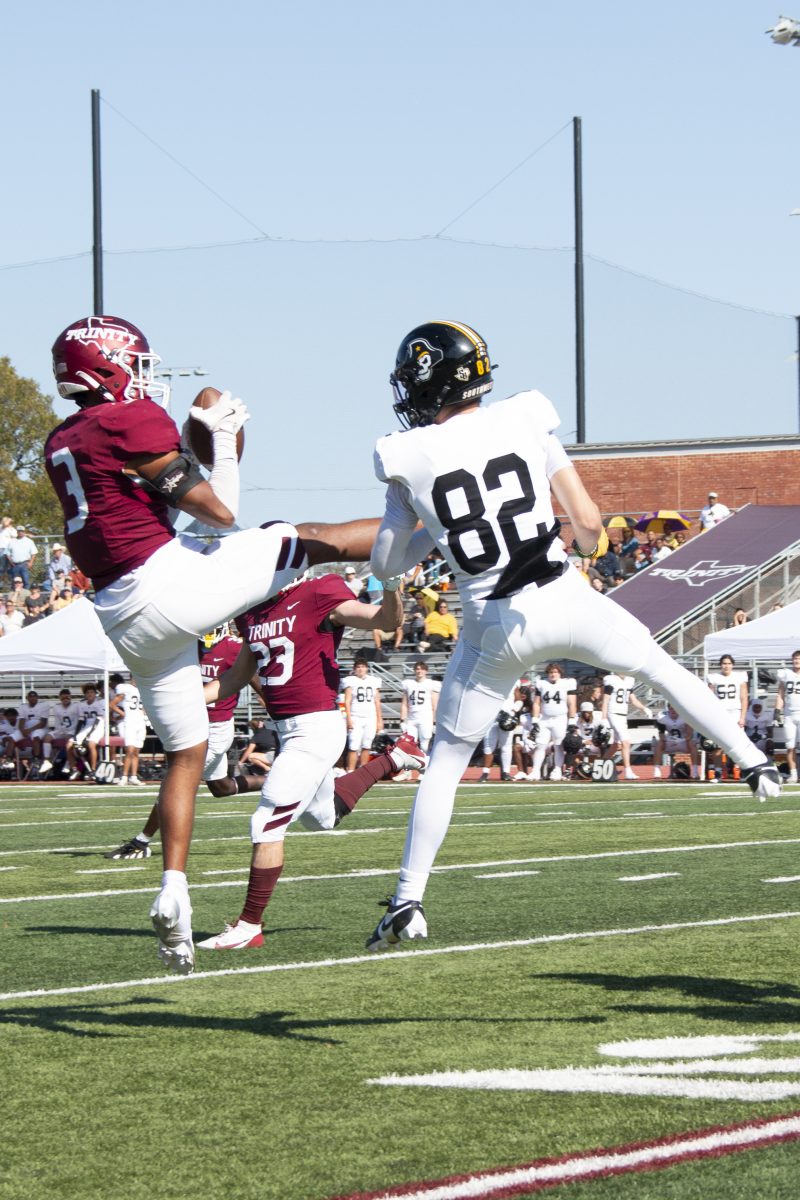Photo by Matthew Claybrook
Trinity’s women’s soccer team starts the 2019 season with six wins under their belt and a 6–2 record. The team is expected to win an 11th consecutive Southern Collegiate Athletic Conference Championship (SCAC), which would be Trinity’s 24th overall SCAC title.
High expectations rest on the shoulders of the team’s 32 players, half of whom are first-years. If that seems like an unusually large team, that’s because it is. According to Next College Student Athlete (NCSA), the average roster size for a women’s soccer team at the DIII level is 25 players.
The large team size is due to the recruitment of 16 first-years. That means that 50 percent of the team are first-year players. The 2018 roster also had more players in their first year than any other age group, but it is still a dramatic leap from last year’s team which was 39 percent first-year players.
When asked if bringing on so many new players and creating a large roster was a team-building strategy, head Women’s Soccer coach Dylan Harrison explained the advantages of having a large team.
“We play so many games in a short amount of time, and unfortunately for us, injuries occur. With the roster being the size that it is, it even allows us to rest players, so little injuries don’t become big injuries,” Harrison said.
However, Harrison made it clear that the players were not recruited simply to fill up the bench.
“We recruited students who fit what we’re trying to do here and each and every one of them, we feel, are very good players and bring something to the team that maybe nobody else does,” Harrison said.
A team primarily made up of first-year players, even very good first-years, can present challenges. Because the first-years outnumber older players, it can be difficult for older and younger players to build relationships.
“There is no doubt a gap to overcome from having such a large freshmen class. It’s natural for the first-years to congregate together,” said first-year midfielder Alana Wickham.
However, this natural inclination for birds of a feather — or women around the same age — to flock together has not seemed to prevent the older and younger players from bonding.
“The upperclassmen are still very approachable and willing to help if we need anything,” Wickam said. “Their advice and knowledge have contributed to my growth as both a player and student adapting to college life.”
Older players begin building relationships with incoming players as early as the recruitment process.
“[When] students visited the school in the recruitment process, a lot of the time they stayed with current players, so they had this relationship [entering the season]. Even throughout the summerolder players have some questions each week to ask the younger players to try to get to know them,” Harrison said.
The relationship between players has continued to develop as the team travels and plays together.
“Our first flying trip to Washington has provided ample opportunities for team-bonding, and everyday we are becoming a more cohesive unit both on and off the field.” Wickham said.
In addition to the long flight from San Antonio to Tacoma, Washington, the team’s stay in a cabin in the woods — on Friday the 13th, no less — brought the team closer together.
When there are 32 players and 11 spots on the field, a potential side effect is an increase in the competition to earn a starting spot. As if the competition to earn playing time was not enough, with so many first-years, especially in the forward and mid-field positional groups, there can be pressure on new players to stand out.
“[Having so many girls on the team] definitely makes it a lot more competitive as far as playing time,” said sophomore mid-fielder and forward Madison Horner
These, however, do not seem to be looming issues for the women’s soccer team. Wickham praises Harrison for his discretion in deciding player rotations and game time distribution to improve the team’s odds of success.
“Although we have 16 freshmen on the team this year, I still think [Harrison] does a great job of rotating players and distributing playing time to when it is most beneficial for the success of the team,” Wickham said.
During the Sept. 13 game against University of Puget Sound, Trinity had 11 substitutions. Of the 18 players who saw game time, eight were first-year players. Harrison explains that he gives no preference for playing time based on seniority.
“We trust our team. We trust a senior to make the right decision to give us the best chance to win, just like we trust a first-year. They haven’t disappointed,” Harrison said.
Harrison encourages his team to have a growth mindset and push themselves to improve every day. Wickham said that Harrison’s philosophy has relieved some of the pressure to stand out amongst her teammates, especially the other first-years.
“I don’t see it so much as competing with others as competing with the past versions of myself, and I think that alleviates some of the pressure of having to ‘be better than the other freshmen, midfielders, etc.’ because ultimately we are all a team working towards the same goals,” Wickham said.
Competition can also be a positive for high achieving teams.
“[Competition] increases the environment and intensity during practice, which is really great for post-season play and conference play,” Horner said.
There are strengths of having so many players on the team. If there is an injury, as Harrison stated, there’s a player ready to step up to the plate. Having so many teammates leads to a healthy spirit of competition which pushes individual players to improve, and the diversity offered by so many players is a strength both on and off the soccer field.
p.p1 {margin: 0.0px 0.0px 0.0px 0.0px; text-align: justify; text-indent: 12.0px; font: 10.0px ‘Adobe Garamond Pro’} span.s1 {letter-spacing: -0.2px} span.s2 {letter-spacing: -0.1px}
“Everyone has different strengths and weaknesses, and with so many numbers it allows us to be strategic in playing to our particular strengths against the specific weaknesses of other teams,” Wickham said.

